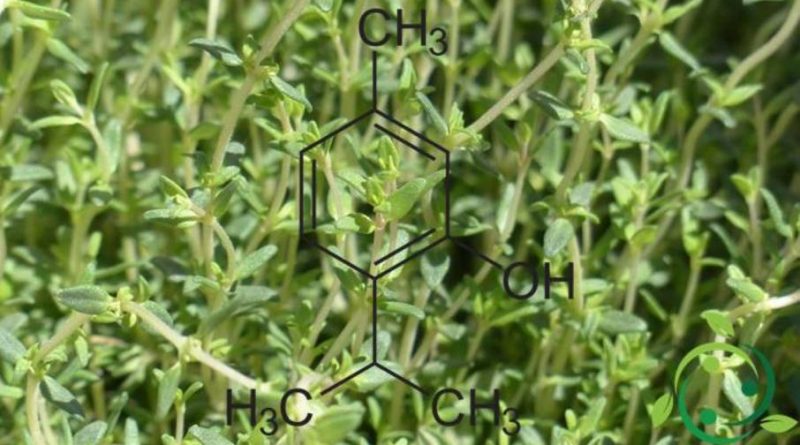Thymol
Thymol
Thymol, whose name in the official IUPAC nomenclature is: 2-isopropyl-5-methylphenol 3-hydroxy-4-isopropriltoluene and whose brute or molecular formula is: C10H14O, is a monoterpenic phenol which is found in good concentration in the plants belonging to the genus Thymus.
The term thymol derives from the Thymus plant and is the substance that gives it, together with other molecules, including the carvacrol, the particular aroma and fragrance.
Thymol is equipped with antimicrobial details. This feature has been demonstrated by many studies that attribute this property both to the induction of antibiotic susceptibility in drug-resistant pathogens and to powerful antioxidant properties.
These studies have shown that thymol, together with carvacrol, reduce bacterial resistance to antibiotics through a synergistic effect; moreover thymol was found to be an effective fungicide, in particular, against fluconazole-resistant strains.
Furthermore, these studies have shown that thymol and carvacrol have antimutagenic effects and that thymol, according to some research, has anti-tumor properties.
Thymol, as well as in natural biosynthesis, can be produced through the reaction, in the gaseous phase, between meta cresol and propene.
One of the most interesting and promising uses of thymol is that it is used as an antiseptic and antimicrobial in toothpaste and in products for the disinfection of the oral cavity in general.
Besides being used, moreover, as a medical disinfectant or for general use, it can find an interesting use as a pesticide with a broad spectrum of action. This opens up interesting perspectives in the field of organic farming and agro-ecological techniques.
In beekeeping, it has proven to be a valuable aid in the fight against Varroa destructor, and it is supposed to kill the parasite by binding octopamine receptors, GABA and TRP ion channels.
Warning: The information given is not medical advice and may not be accurate. The contents are for illustrative purposes only and do not replace medical advice.

